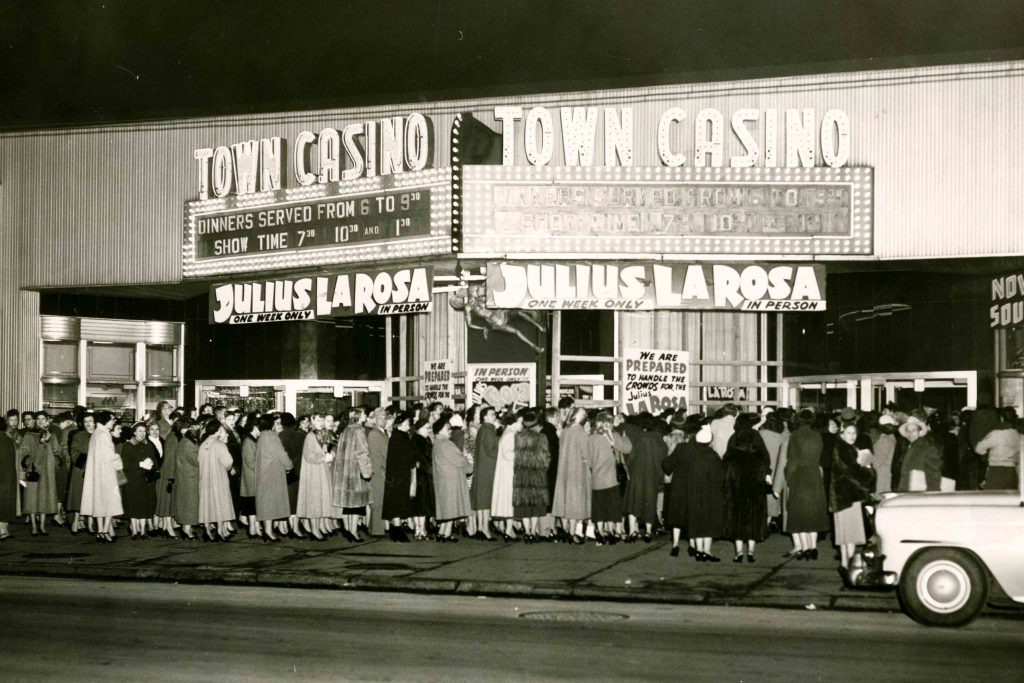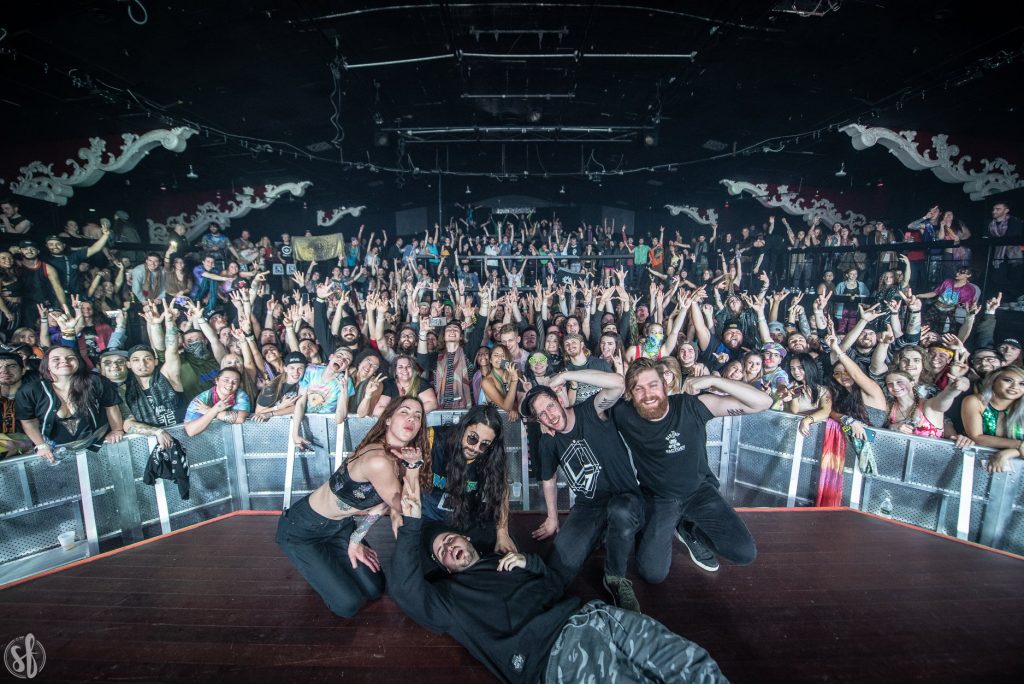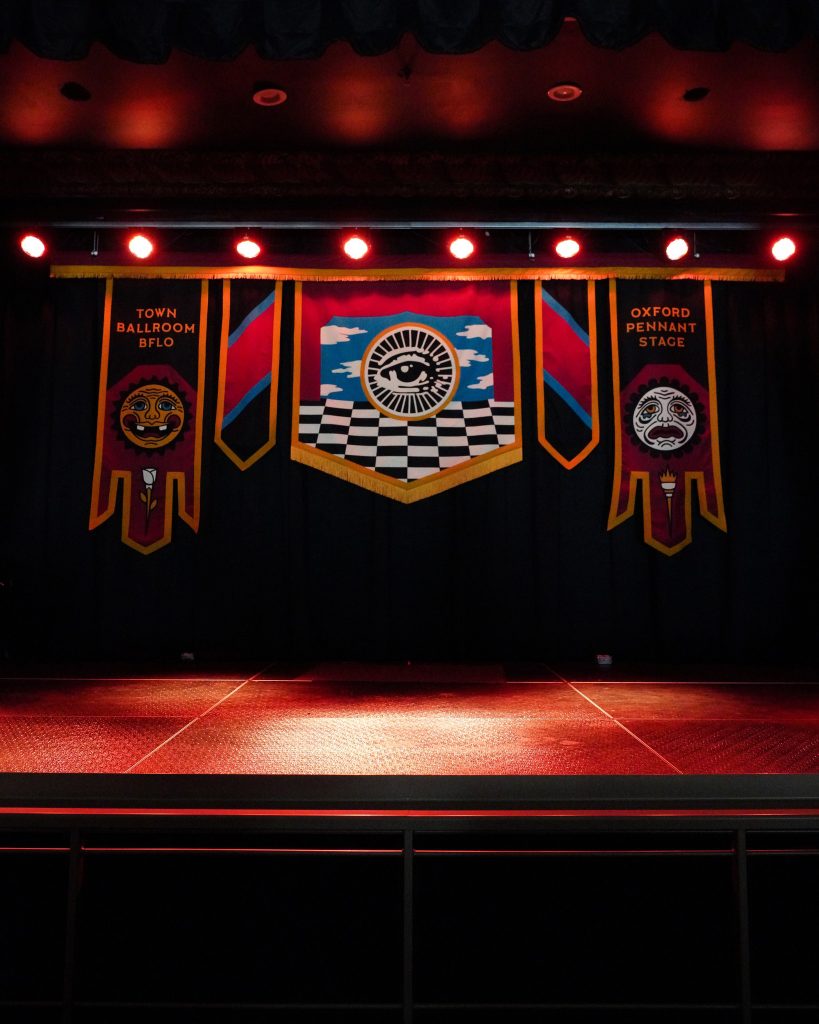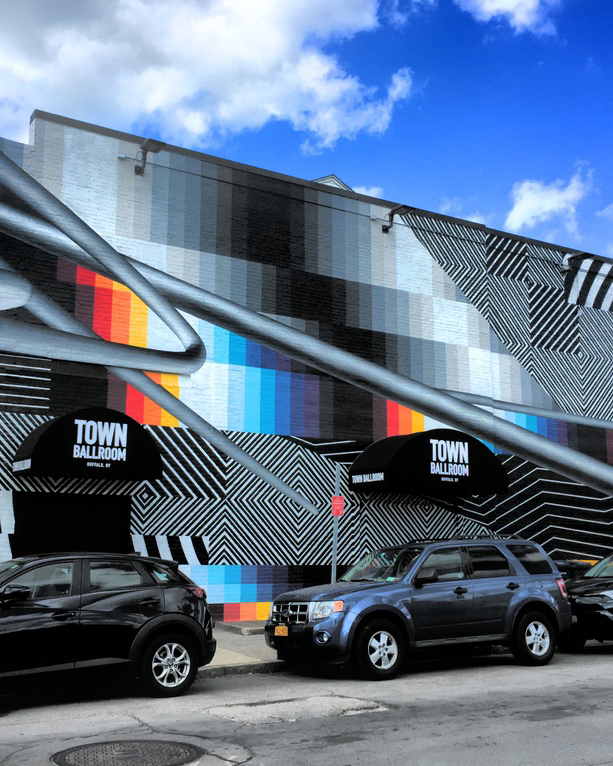Town Ballroom amplifies the spirits of Buffalo’s famous Casino
For nearly 20 years, Buffalo’s Town Ballroom has earned its rep as one of downtown’s most significant live music spots.
Since 2005, the locale has hosted some of the city’s most legendary sets, with up-and-comers and established performers taking its stage with the same ferocity. Solo artists and bands have been embraced by its intimacy; EDM technicians have turned its tiered seating into dance floors; and Canadian legends have crossed the Peace Bridge to please cross-border legions within a home away from home.
But to truly understand the mystical significance of the Ballroom, one needs to hear the words of Rock n’ Roll Hall of Famer Patti Smith, who during a tour of the building with now-owner Donny Kutzbach, simply remarked, “There’s a lot of spirits in here.”
“She’s an awe-inspiring person, but you meet her and she’s so down to earth and kind,” says Kutzbach. “But she’s also very spiritually attuned.”

This may have allowed Smith to feel the ghosts still lurking in the walls of Buffalo’s former Town Casino. Built at the same address as the Prohibition-era nightclub Town Barn (which burned in a fire—and likely left behind a few ghosts of its own), the iconic establishment opened in 1945, and was the swanky jewel in the crown of the Queen City. With its nightly allotment of dancing showgirls, formally dressed dinner guests, and nefarious characters sipping sidecars in its clandestine basement bar, the self-described “most luxurious theatre-restaurant in America” had enough panache to illuminate the city’s entire Theatre District. And for three decades—through wars, a baby boom, and a transition to less elegant attire—the club endured as a must-visit staple of downtown Buffalo nightlife.
However, despite these intriguing details, none of them made the Town Casino a place to be lionized, revered, then eventually resurrected as Town Ballroom—but its years of live music did. Featuring the likes of Miles Davis, Frank Sinatra, and more until shuttering in the 1960s, the Town put on multiple shows a night, and gave Buffalo locals a veritable smorgasbord of legendary recording talent to celebrate on a regular basis.
Recovering this musical splendor—and honoring it with every song, show, and guitar solo—motivated the space’s purchase in 2004. After taking a detour from its original grandeur via use by Studio Arena and the University at Buffalo, then remodeled into the Sphere Entertainment Complex, local music promoters Kutzbach and Artie Kwitchoff (along with partner John Peters of Mass Concerts in Massachusetts) took over, committed to return the venue to its rightful place at the center of the city’s music scene.

“We were very drawn to the location because of the history,” says Kutzbach. “Artie’s mom told us about seeing Nat King Cole here. My dad saw the garage band legends The Kingsmen sing ‘Louie Louie’ on our stage.”
The new ownership team had the bona fides to do it, with Kwitchoff as the former manager of the locally bred Goo Goo Dolls, Kutzbach the former music editor of Buffalo’s Artvoice, and the pair’s collective work with Clear Channel Entertainment (now Live Nation). But through the duo’s collaboration on Kwitchoff’s Funtime Presents, the two had handled booking and promoting club shows throughout Buffalo, Southern Ontario and beyond, giving each ample experience and industry know-how to make their to-be-christened Town Ballroom the music venue Buffalo needed—and deserved.
“We had seen the potential from the shows we had under our belt during the Sphere era,” says Kutzbach. “The Theatre District was a lot quieter when we got there, but now we have traffic on Main Street and a lot of other [nearby] businesses thriving. I hope we had a little something to do with that.”
Over nearly two decades, they’ve certainly livened the district, cultivating a 1,200-capacity performance space that’s hosted everyone from the Wu-Tang Clan to Kasey Musgraves. After mingling inside’s the club’s front barroom, guests will find multiple levels surrounding the stage in a semi-circle configuration, providing a club layout that’s conducive to fans who want to be spaced apart or shoulder to shoulder with fellow concertgoers. Its sound capabilities continue to accommodate both acoustic and bombastic collectives with the same clarity; and if attendees look to the Ballroom’s upper reaches, they’ll find the building’s original artistically designed trusses, bracing the same roof that once held the echoes of Dizzy Gillespie’s trumpet and Les Paul’s guitar.


In recent years, the club has added the Oxford Pennant Stage, sponsored by Ballroom’s camp flag-making neighbors, and set within its barroom to host up-and-coming local acts. Outside, they’ve dramatically updated their exterior appearance, first with a new Main Street marquee to memorialize The Tragically Hip’s legendary two-night 2007 performance; and second with a hypnotic mural (entitled “Optichromie”) by visual artist Felipe Pantone adorning its rear, load-in entrance.
Not to be outdone by its backdoor artwork, depictions of Snoop Dogg and Patti Smith by noted caricature artist, Phillip Burke now flank the front entrance. Both have performed within the Ballroom expanse, but it’s the latter who Kutzbach refers to as the club’s “patron saint.” Her observations long ago provided a callback to the cacophonous specters of the past, how palpable they remain today, and how the Ballroom’s current stewards are the perfect team to carry them—and the music—to current and future generations of Buffalo area music fans.
“Patti Smith saw it,” says Kutzbach. “I guess we were destined to be here because the spirits of 681 Main wanted us.”
